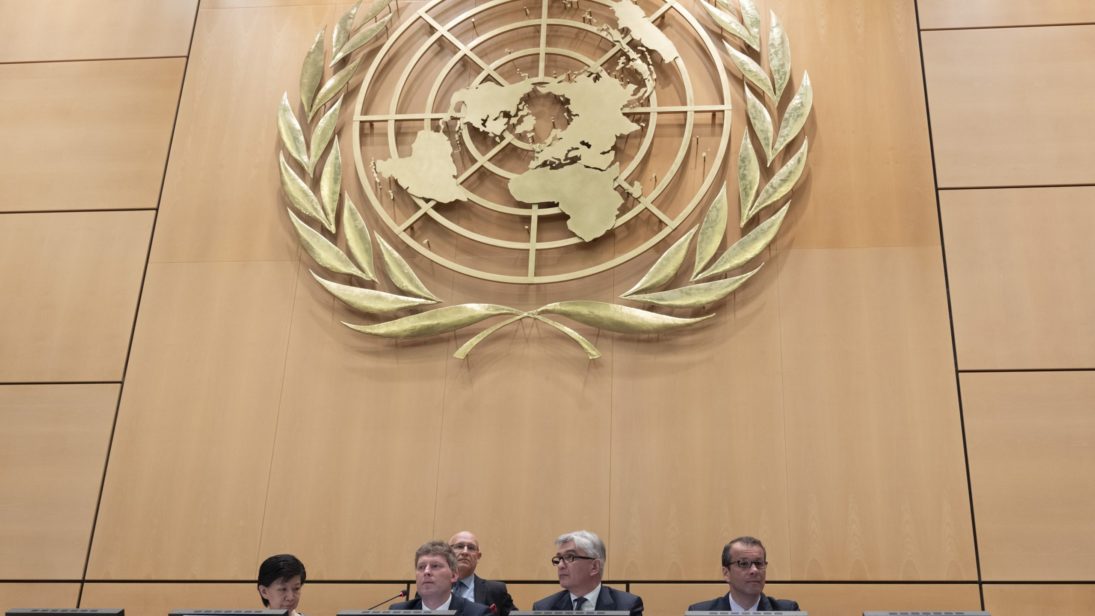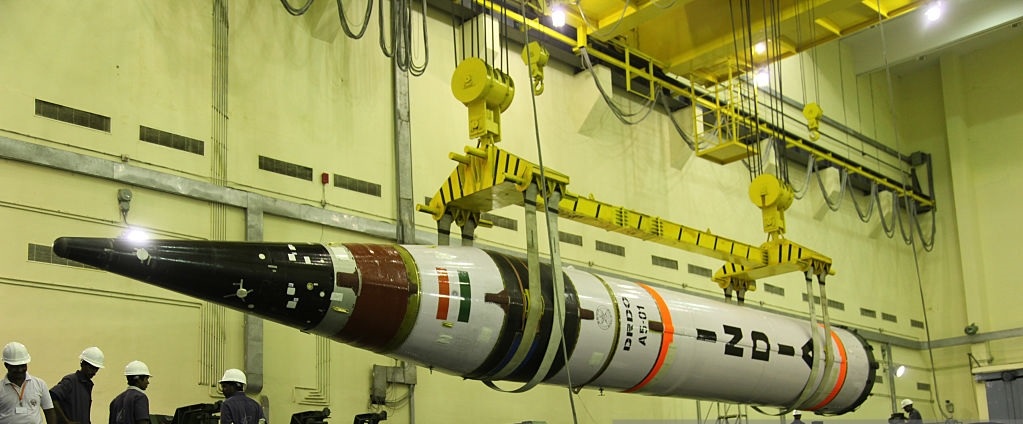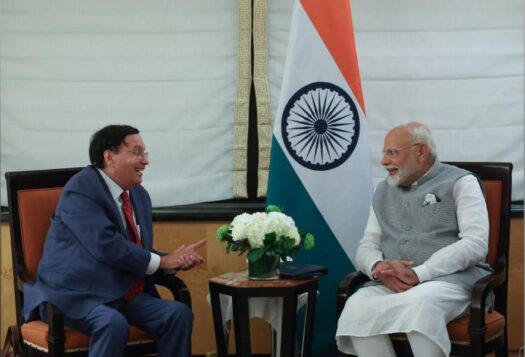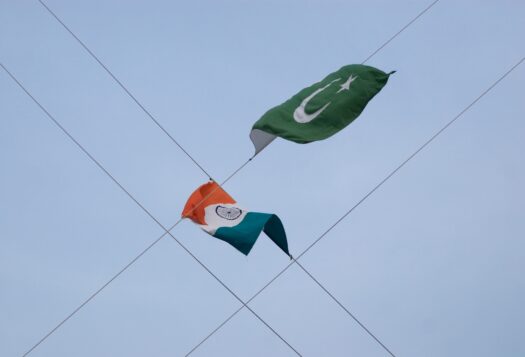
The Trump administration’s decision to abandon two key bilateral arms control pacts with Russia, the Intermediate-Range Nuclear Force Treaty (INF) and recently the Open Skies Treaty (OST), is calling into question the arms control and non-proliferation norms which have long been seen as universal ideals underpinning international peace and security. Concern over the deterioration of these norms increased further in May 2020, after reports came out that the Trump administration was considering the resumption of nuclear testing. The United States has given two primary reasons for pulling out of the treaties and considering testing once again: first, Russia’s violations or non-compliance; second, Beijing’s being a non-party and hesitant to sign the treaties. It seems that Washington’s desire to pull China into these treaties is a follow-up to its 2017 National Security Strategy which placed China in the same league with Russia as primary strategic rivals.
The unraveling of the nuclear arms control treaties has the potential to instigate more complexity in triangular security relationship between China, India, and Pakistan. South Asia’s nuclear weapon states tend to make nuclear policy based on either international nonproliferation norms and practices or nuclear developments with respect to their strategic rivals. The reduced focus on nonproliferation norms at the international level could enhance the risks of strategic instability, lead to a dangerous arms race in the region, and is likely to have a domino effect across the region’s nuclear powers.
INF withdrawal: Impact on South Asia’s Strategic Environment
The reduced focus on nonproliferation norms at the international level could enhance the risks of strategic instability, lead to a dangerous arms race in the region, and is likely to have a domino effect across the region’s nuclear powers.
The South Asian strategic environment can be viewed through the prism of great power competition and global geopolitics between the United States and China at global level and triangular ties between China, India, and Pakistan at the regional level. Divergent strategic interests, military modernization, and technological advancement of one country produce the corresponding developments in another, generating a security dilemma among these countries.
The Trump administration’s decision to terminate the arms control treaties may trigger anarchy and instability not just in the U.S.-China-Russia triangle, but also in the China-India-Pakistan triangle. According to the 2017 National Security Strategy, China is viewed as the primary threat to the United States’ national security interests in the Asia-Pacific region. From the U.S. standpoint, China’s advantage in conventional missiles—particularly land-based, intermediate-range ballistic and cruise missiles—is viewed as the key factor influencing its decision to withdraw from its arms control treaties with Russia. China’s ability to hit the United States territory of Guam, in addition to key U.S. allies such as South Korea and Japan, with missiles is regarded as a grave threat to the U.S. security in the Asia-Pacific region. By withdrawing from the INF, the United States is able to develop or deploy land-based intermediate-range missiles in the Indo-Pacific region, either on the islands of Diego Garcia and Guam or in the territories of its allies. Should the United States decide to do this, it could trigger greater military competition between China and the United States.
China sees the United States’ withdrawal from the INF as a China-centric move which constitutes a significant threat to its security in the Asia-Pacific. Highlighting this concern, in October 2019 the spokesperson for China’s Defense Ministry, Wu Qian, warned that China was in “resolute opposition” to the possibility of the United States deploying land-based cruise and ballistic missiles in the region. The potential response by China to the possibility of a U.S. missile deployment in China’s periphery could include countermeasures to build up China’s missile forces and capabilities. According to the security analysts, China may respond by deploying land-based intermediate-range ballistic missiles (IRBMs) to target U.S. territories, military bases, and allies including Japan and South Korea. Additionally, the continental United States is already in the range of China’s Dongfeng-41 intercontinental ballistic missile (ICBM). The United States’ missile development or its deployment of missiles in the Asia-Pacific region and Beijing’s counter response may intensify the military competition and perpetuate instability between Washington and Beijing.
India’s missile program is not only aimed at countering Chinese threats—the nature of deployment and acquisition of advanced missile systems allows India to simultaneously maintain an offensive posture against Pakistan.
In turn, India may feel vulnerable to China’s deployment of land-based IRBMs. China-U.S. strategies might be viewed by India as consequential for its security and its aspirations to become a great power. This could have the potential of heating up competition between India and China, particularly since Indian strategists already view China’s development of intermediate-range missiles as a security threat to India and other Indo-Pacific states. India’s development of countermeasures—namely its Agni-V ICBM and Agni-IV IRBM—further suggest India’s perception that Chinese missile development is a threat to its national security. From India’s perspective, the threat from China emerges due to unresolved border issues and increasing China-Pakistan strategic relations. China however views India’s threat perception as a self-fulfilling prophecy, driven by India’s domestic politics and its aspirations to become great power. In response to China’s deployment of IRBMs against regional states to maintain security, India may aim to cope with China’s overwhelming missile capabilities by rapidly enhancing its missiles inventory, their ranges, and level of readiness. India’s reported purchase of “Hammer” missiles from France, which are capable of enhancing the operational preparedness of Indian armed forces, might be an effective counter measure to manage Chinese missile advantages during a crisis.
Yet, India’s missile program is not only aimed at countering Chinese threats—the nature of deployment and acquisition of advanced missile systems allows India to simultaneously maintain an offensive posture against Pakistan. Thus, India’s quest for advanced delivery capabilities and development of more accurate, long-range ballistic missiles with the ready arsenals to counter a Chinese threat could increase the nuclear power gap between the traditional adversaries—India and Pakistan. In response, Pakistan may consider enhancing its short-range ballistic missile and cruise missile inventories to address this gap and maintain deterrence against India. Thus, regional security dynamics and the competitive nature of India-Pakistan relations could further induce fragility in nuclear stability between New Delhi and Islamabad and may increase the risk of nuclear escalation in South Asia.

Norm against Nuclear Testing
Reports of the Trump’s administration proposal to resume nuclear weapon testing is also thought to be linked to growing geostrategic contentions between China and the United States in the Asia-Pacific region. It have been theorized by some in the United States that the Trump Administration is using the threat of resuming testing to achieve its political objective of establishing trilateral nuclear arms control arrangement between the U.S.-China-Russia. Yet, a nuclear test by the United States is unlikely to serve these political interests and instead might increase geostrategic contentions in the U.S.-China-India-Pakistan security chain.
Should the United States go ahead with testing, it is possible that it could open the doors for India and Pakistan to also conduct nuclear tests, which has the potential to intensify an arms race between the two nations as they seek to maintain strategic stability with each other. Despite India’s unilateral moratorium on nuclear testing, there has been some academic debates regarding whether or not India should use this opportunity to verify and increase its thermonuclear capabilities, which remain somewhat limited after the tests in 1998. If India decided to resume testing in order to improve its thermonuclear capabilities, it could instigate security dilemma for Pakistan who may feel like it needs to follow New Delhi’s lead—Pakistan’s nuclear program and policies are generally kept in line with developments in India’s nuclear policies. Given the dynamics in South Asia, a violation of the non-testing norm could have the potential to undermine strategic stability in South Asia.
The current discussions around the resumption of nuclear testing demonstrate the existing weaknesses in the current global non-proliferation framework, which allows states to capitalize on their interests and places the non-proliferation regime under great stress. The impact of the United States’ recent decisions regarding arms control agreements and nuclear testing is well illustrated through the strategic connectivity between the United States, China, India, and Pakistan. The abrogation of non-proliferation treaties and norms incentivizes nuclear powers to modernize their strategic forces, which could create asymmetries within these nations’ nuclear and missile force structures. The arms race that could potentially result from this could pose an extraordinary threat to non-proliferation efforts.
***
Click here to read this article in Urdu.
Image 1: UN Geneva via Flickr


